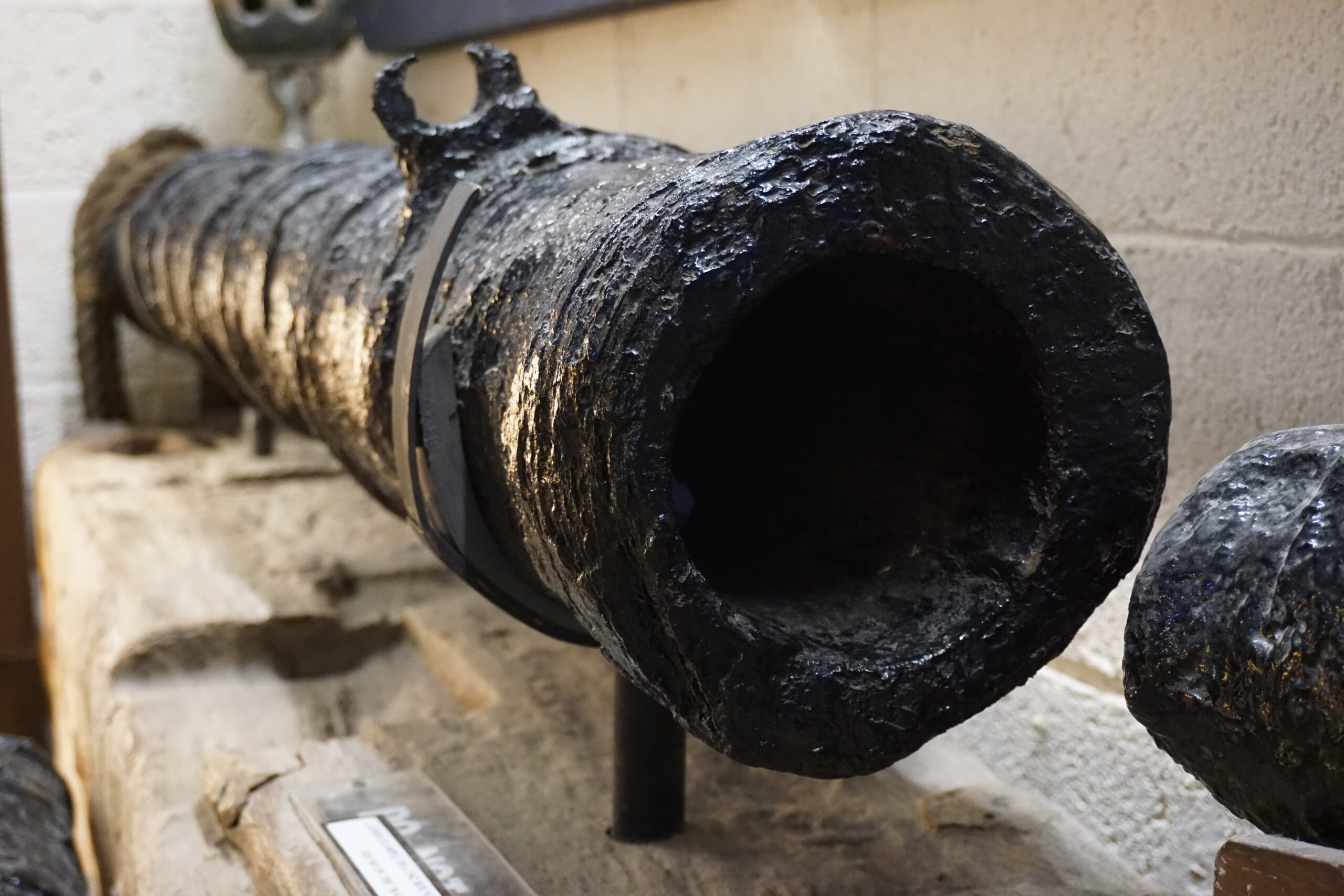Ready, Aim, Fire!
‘Whosoever commands the sea commands the trade; whosoever commands the trade of the world commands the riches of the world, and consequently the world itself.’ Sir Walter Raleigh c.1552 – 1618

For as long as there have been ships at sea, rival peoples have been looking to attack, board and sink them. As explained in the quote above, attributed to famous Tudor explorer Sir Walter Raleigh, whoever commands the sea, commands the world itself and to command the sea, you must first have the means to stop other people from doing so.
The methods used to attack ships at sea have changed a great deal over time. There are weapons that would surprise you and events that sound made up, all driven by the desire to control the oceans around us and to protect ourselves from others who may have the same aim in mind. Here are five examples of maritime weapons and their stories:
A Castle on the Sea
Long before the use of cannon onboard ships, naval engagements would be fought using hundreds of archers protected by castle-like ramparts built at the front and the back of the ships. The aim was to effectively fight a land battle at sea, diminish the enemy’s numbers from range and then bring the ship in close for boarding and hand-to-hand combat on the decks of the ships. This way of fighting was still in use at the time of the sinking of the Mary Rose in 1545, with 137 longbows later being recovered from Henry VII’s ship by divers.
Always Keep Spares
The flints on flintlock pistols and muskets were essential for being able to fire these weapons. The spark created by the striking of the flint onto a metal plate ignites the gunpowder that fires the shot at the enemy. These flints would often fail and break, not a welcome thing to happen in the middle of a battle! Fortunately for the crew of the English East Indiaman Earl of Abergavenny the ship carried barrels full of replacement flints, just in case. Unfortunately for the crew, the ship sank of the Isle of Wight in 1805.
Gunboat Diplomacy
The shortest war in history lasted just 38 minutes! The Anglo-Zanzibar war of 1896 was over in less time than half a game of football after British warships bombarded Stone Town in Zanzibar with 500 shells, 4,100 machine gun rounds and 1,000 rifle rounds, killing 500 defenders and destroying the palace. This was a devastating show of strength from the British and a demonstration of the power of naval weapons against land-based targets rather than sea-based ones.
That’s a Long Shot
An 18th Century cannon could fire a 42lb shot 2,900 yards. Sending a 19kg lump of red-hot iron over 2.5km into another ship is certainly an achievement to respect and something to be feared, especially as the splinters caused by the impact can rip through an entire deck and wreak havoc on the well being of the crew within. However, less than 200 years later in the First World War, HMS Furious (If ever a name sums up the nature of a warship, that’s it!) was able to fire a 3,320lb shell 40,500 yards. In other words, that’s a 1500kg shell travelling over 41km! I don’t think the name HMS Calm would have been suitable for a ship with guns that could do that…
Smoke and Mirrors
Have you ever tried to create a fire on a sunny day with a magnifying glass and some tissue paper? Well, the ancient inventor Archimedes went one better during the siege of Syracuse in 212BC. Defending the Sicilian city against the might of the Roman navy, Archimedes used an array of mirrors to reflect the hot Mediterranean sun onto the ships, causing many of them to burst into flames and sink! Unfortunately, this ingenious invention was not enough to save the city from the invaders and Roman soldiers executed the most famous mathematician of Ancient Greece after he apparently refused to leave the diagrams that he was working on when they burst into his house to capture him.
